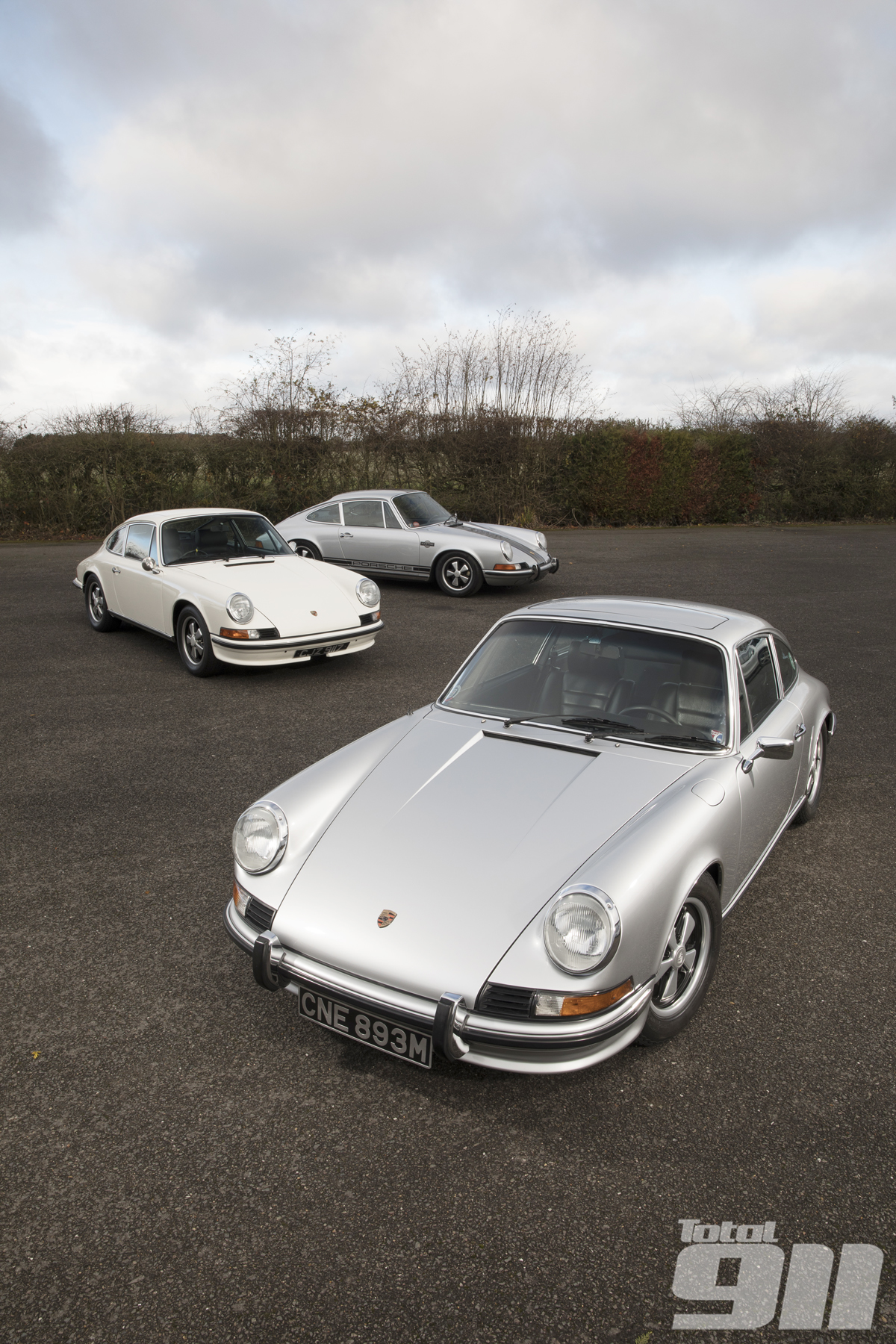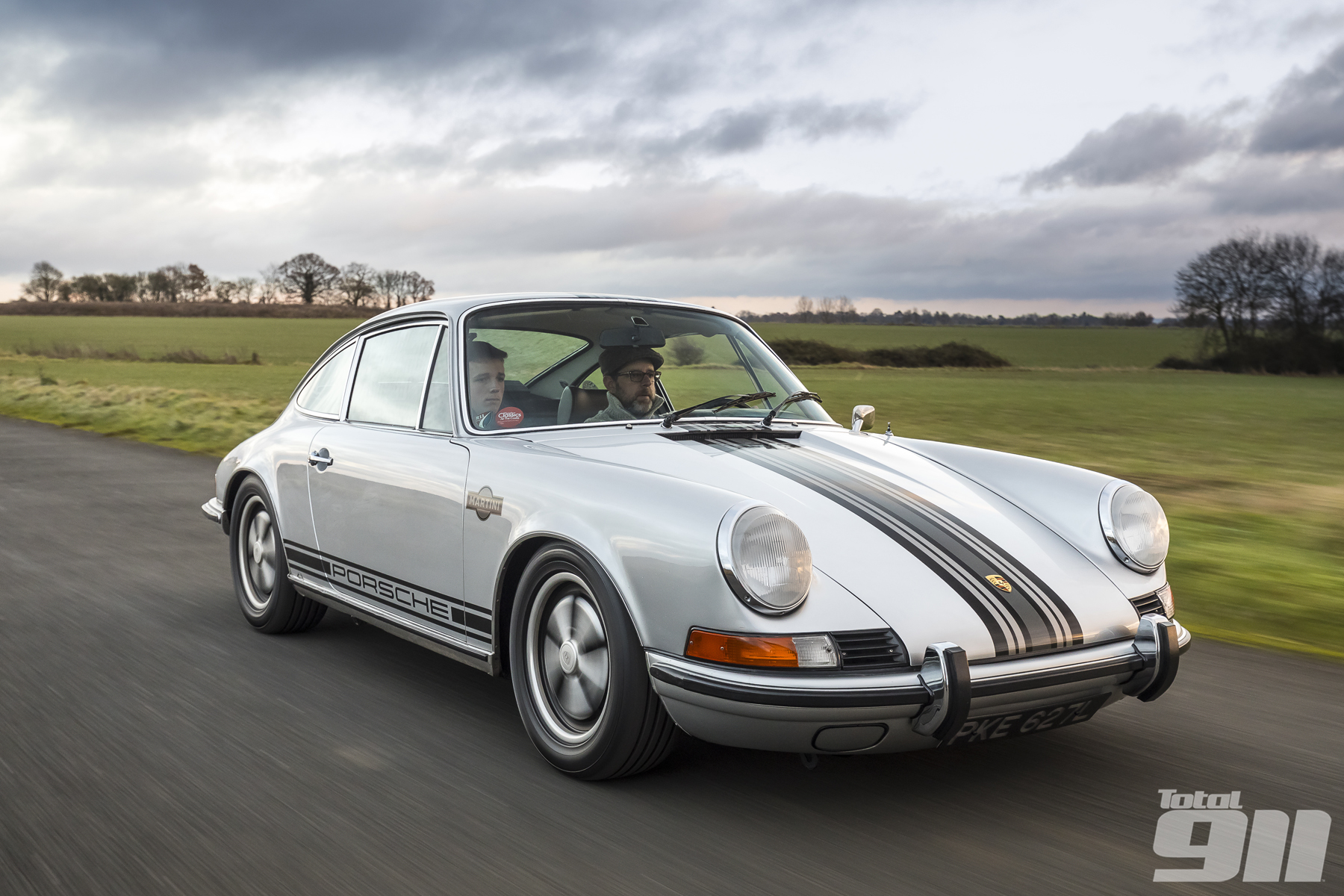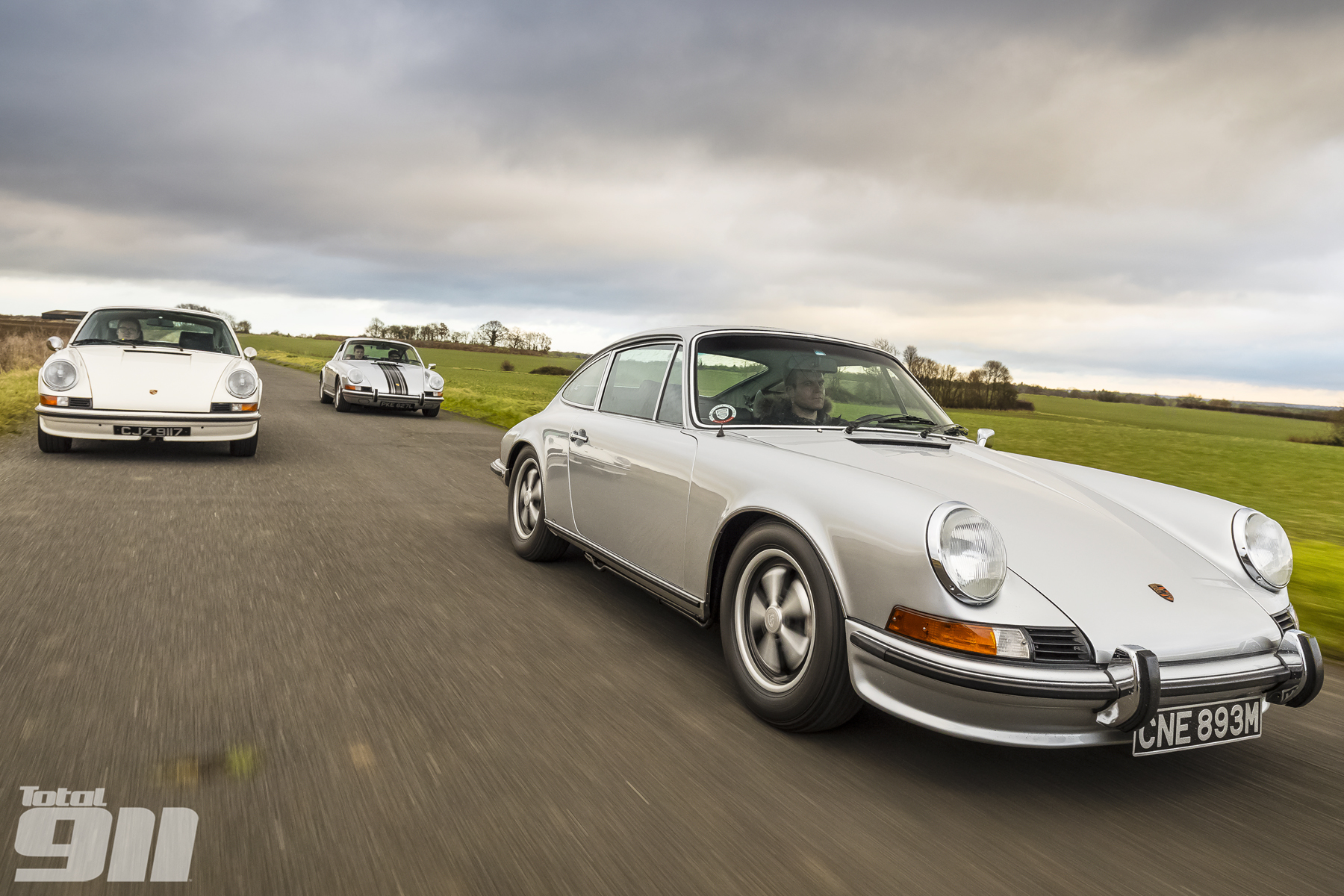Classic icons: Porsche 911T v 911E v 911S
In issue 159 of Total 911 we compared the 991.2 Carrera, GTS and Turbo S, declaring them the “modern-day interpretations of the 911 T, E and S”. Now, we’re rewinding the clock 45 years to the classic originals. Meet the mainstream F-series range as it was in 1973, the final year of the ‘long bonnet’ before the impact-bumpered G-series arrived, a move which changed the 911’s look forever.
Why ‘mainstream’? Well, as Porsche enthusiasts, we all have ‘1973’ branded on our collective consciousness as the year of the first road-going Rennsport. The Carrera 2.7 RS is a fully paid-up icon and arguably the greatest 911 ever made, yet, then as now, it was exclusive and expensive. So, just as we excluded GT models from our 991.2 triple test, the RS fails to fit the brief here.

The three-tier 911 hierarchy was established in 1968, when the entry-level T (Touring) and mid-range L (Luxury) joined the flagship S (Super) – the latter introduced in 1967. At this stage, all had 2.0-litre engines and a 2,210mm wheelbase. The carburettor-fed L gave way to the fuel-injected E (Einspritzung) in 1969, when wheelbase was lengthened to 2,271mm. A year later, the flat six grew to 2.2-litres, then 2.4-litres in 1972. The 2.4 F-series models were thus in production for just two years, compared with 15 for the G-series.
The three cars gathered today – kindly sourced by Paul Stephens in Essex – all hail from 1973, and look near identical at first glance. Get closer, though, and it’s apparent there are detail differences, most obviously the colour of the engine shroud: black on the 130hp T, green on the 165hp E and red on the 190hp S. However, as those power outputs suggest, by far the biggest difference is felt on the road.

I start in the middle with the 911E: a model Paul describes as “undervalued”. This particular example is resplendent in Light ivory (colour code: 131) on polished 6×15-inch Fuchs. It’s the only UK car here, which explains the round door mirrors – both the T and S are US imports and sport rectangular mirrors – while the absence of optional bumper over-riders or chrome wheel arch trims results in a cleaner look.
The E being a right-hooker helps me acclimatise more quickly, yet there’s still much that feels alien about a 911 of this era. The hand throttle, a hinged choke lever nestled between the seats, is one notable quirk, as are floor-hinged pedals that force you to skew your legs towards the centre of the car. Unassisted steering and a five-speed 915 gearbox that’s obstructive when cold are further features that would confound drivers of modern machines – not least anyone accustomed to water-cooled 911s.
To read the full article on our Porsche 911T vs E vs S mega test, pick up a copy of Total 911 issue 161, in shops now and available to buy here or download.

Comments (0)